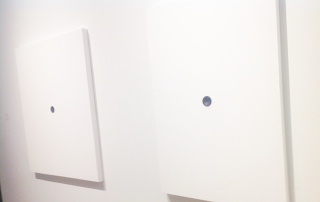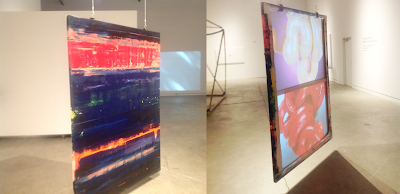Previously, I
talked about the issues of being disabled in the art world. More specifically, having a walking disability and wanting to view and adsorb and be involved in art. In the aftermath of that post, I started to think about the places I have been and what kinds of experiences I have had. And I thought that a post like this, where I lay out the best and worst places I have been, might be useful to someone else. This does not cover disabilities I do not experience, because this list is based solely on my own personal history.
___
WORST
I haven't been everywhere and I'm sure other places could fit into this slot. Artist's studios with stairs, etc. But when I tried to attend a lecture at the San Francisco Art Institute last week, not only could I not find a parking space anywhere close enough for my physical ability, but I couldn't very well find an easy access point. It does not look like I will try to see anything at SFAI anytime soon. The accessibility, parking, and steep walking does not make this place a good place for me to visit.
NOT FOR THE FAINT OF HEART, BUT DOABLE (WITH EXCEPTIONS)
This section is honestly the "there are problems but it's okay if you're willing to put some work into it, and they can be really awarding!" section.
One of my most frequently visited spaces is the Legion of Honor (sister museum to the de Young) in San Francisco, and it is definitely completely accessible. It of course has disabled parking and ramps, nothing too terrible. But, there are not many parking spaces and if you are forced to park along the side of the building, you're going to be looking at a uphill/downhill battle. If you are able to get into one of the coveted disabled spots, the walk (uphill) to the front doors is a bit of a ways. Again, doable, there are railings and it's not too steep or too far, but it's still a chore, depending on your capability. On the inside there is an elevator, but it is not right by the door. In fact you have to walk through several galleries to reach it, and it is not very clearly marked. Once you get down to the ground floor, it's not much of a walk to the exhibition area. This was actually the first major place I went after my recuperation and it was hard on me, but clearly it wasn't too much. I recommend it, but be prepared.
I have spent a lot of time in the galleries at Sac State this semester and while they are great, often by elevators if not on the ground floor, they can have their problems. And the biggest problems? You might see a pattern here, the biggest problem is the walking distance. The Else and Witt galleries are not so bad because the use of Moraga road makes them quite accessible, but the Union (which I have visited often) and the Library galleries can be quite difficult. The Union Gallery can be accessed through a faculty parking lot, or even with some extra walking from a student parking garage, but it is still quite a walk compared to the galleries situated in Kadema Hall. Also, you must be in the know about where the galleries and elevators are because if you enter in the building from the wrong entrance, you are in for quite a walk. In its favor, if you enter the building from the right entrance (the doors facing the bookstore) there is an elevator very close that will take you up directly to the gallery. The Library gallery, on the other hand, is quite far for someone walking with a disability. The closest lot to the Library is still pretty far and is not a pleasant experience for those with walking disabilities.
Alcatraz, which is not always an art space but was this spring with Ai WeiWei's installation, is a mostly wonderfully accessible location. The staff was very accommodating and helpful, never making me feel like a nuisance. For someone with a walking disability, Alcatraz is massive and treacherous. It would not have been possible without the services that Alcatraz provides. Unfortunately there are spaces, like the shooting gallery that Ai WeiWei installed his
Refraction piece in, that has steep stairs that are impossible to go down. However, there was an employee available to describe and show me pictures (and even give context) of the installation below. Even with its accommodations, Alcatraz can be a daunting task, but surely one that is worth it.
I was unsure whether the Asian in San Francisco really belonged in this category or the "best" category. To be honest, the reason it belongs in this category for me is not so much because of its accessibility. You can park on the side of the museum and it is not much of a walk to the front doors. The elevators are fairly close, but not right near the entrance. It is a long walk walking through the galleries, but that is somewhat par for the course. The elevators (and how you get to the elevators) is what puts the Asian into this category to me. I am aware that this may seem silly to some, but the elevators, mostly the bridges that connect the elevators to the floors, terrify me. I, Lydia Rogers, am afraid of heights. So, yes, that might seem silly and circumstantial, but the truth is it affects my ability to walk and I feel that for that reason it cannot be put into the next category.
BEST
Fort Mason, which is the venue for the San Francisco Art Market, is quite accessible. There is parking that goes right up to the doors of the building. The building does not have stairs (except for an upstairs lounge of which I am unsure if there is an accessible entrance) and the market has a downstairs lounge for seating. I was very impressed with how easy this space was to access.
The de Young is one of the most accessible places I have been to and that is very much to do with their amazing parking situation. It is a little known secret (I believe) that there is a disabled parking area that brings you right up to the door of the special exhibition area. It is a little hard to find and in truth we have had to drive around aimlessly in the parking garage to find it. It as if we find it by accident every time. But let me tell you: there is a ramp, the parking is very close, the parking vendor is very close, and the exhibit is mere feet away. (If you are going to the de Young and want to find this disabled parking area, ask an attendant about it. This is how I first discovered it.)
Verge Center for the Arts in Sacramento is also a highly accessible art space. There is close parking, not all disabled but accessible all the same, and a ramp going into the galleries. The galleries themselves are flat and without stairs. They are also small enough to not be an issue but big enough to give a show. I highly recommend it.
___
This is, by far, not a complete list but I wanted to rate the places that I have been to recently and hopefully this will help people avoid physically difficult situations and maybe even encourage someone to go see something new in a new place.
Also, if you are reading this and have visited disability accessible art spaces that I have not, please let me know in the comments.


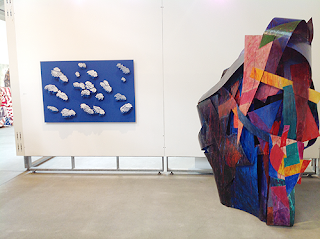

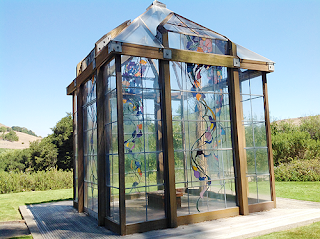
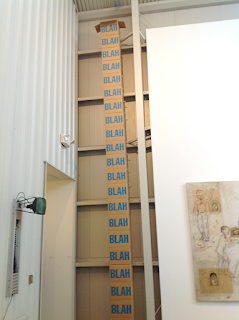


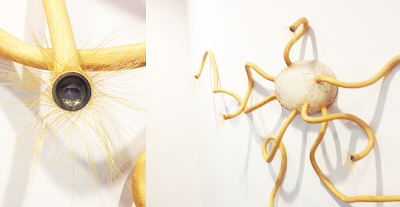

.jpg)



